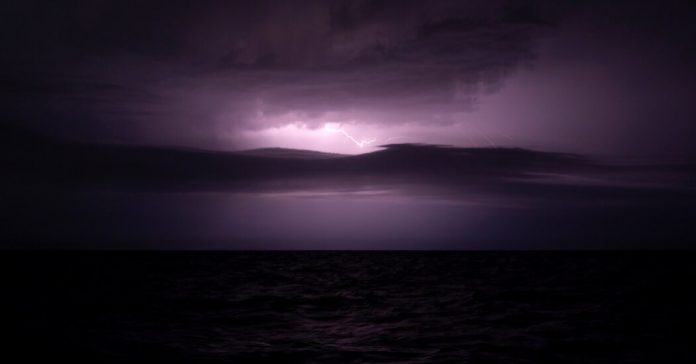One in all nature’s most intense spectacles will be tamed with humble sea salt, the identical stuff that graces some dinner tables. Researchers just lately discovered that the frequency of lightning decreases by as much as 90 % within the presence of salty sea spray. That is smart primarily based on how electrical fields construct up inside clouds, the workforce proposes. These new outcomes, reported this month within the journal Nature Communications, assist clarify why thunderstorms happen a lot much less regularly over the ocean than over land.
From rogue waves to floating particles, mariners have a lot to fret about. However at the least being struck by lightning doesn’t usually make the checklist: In contrast with the lightning that’s recorded over the continents, solely about one-tenth as many strikes happen at sea. Why precisely has lengthy remained a thriller. And that’s a “obvious deficiency” in our understanding, stated David Romps, a physicist on the College of California, Berkeley, not concerned within the analysis.
To dig into this enigma, Zengxin Pan, an atmospheric scientist on the Hebrew College of Jerusalem, and his colleagues mined information from over 75,000 current lightning storms. The researchers mixed observations from the World Large Lightning Location Community, a worldwide repository of radio-frequency observations of lightning, with satellite-based measurements of cloud properties, precipitation and tiny airborne aerosol particles. The purpose was to hint how convective clouds — the birthplaces of lightning — advanced over time in several atmospheric situations, stated Daniel Rosenfeld, a co-author of the examine who’s an atmospheric scientist additionally on the Hebrew College of Jerusalem.
The researchers first confirmed that aerosols smaller than a number of millionths of an inch — like particles of mud and soot related to airborne air pollution — tended to spice up the frequency of lightning for a given quantity of rainfall. That was anticipated, Dr. Rosenfeld stated. Advantageous aerosols perform like miniature touchdown websites for water inside clouds. Liquid tends to stay to them, build up droplets, however these droplets are sufficiently small that they have an inclination to stay round inside a cloud slightly than falling to the bottom as raindrops, Dr. Rosenfeld stated.
And since the presence of water in clouds units up the extraordinary electrical fields that result in lightning, soiled air results in extra lightning. (This impact has been beforehand demonstrated in oceanic transport lanes, that are plied by pollution-belching ships.) The cleanliness of our air — or lack thereof — impacts our climate, stated Wei Gong, one other co-author of the examine and a physicist at Wuhan College in China. “Aerosols in clouds have a big impact,” he stated.
Dr. Pan and his colleagues subsequent demonstrated that bigger particles, particularly the bits of sea salt produced by wind-swept sea spray, suppress lightning. These aerosols — at the least 10 occasions bigger than airborne air pollution — additionally appeal to water, a lot of it, Dr. Rosenfeld stated. “They soak up a variety of water vapor and type comparatively massive drops,” he stated.
However these hefty drops usually tend to rain out of clouds. As a result of that course of removes a key ingredient within the formation of lightning, sea spray is basically a lightning killer, the workforce suggests.
Dr. Pan and his collaborators confirmed that the results of sea spray had been substantial: Storms uncovered to excessive ranges of sea salt aerosols produce as much as 90 % much less lightning than storms with very low ranges of sea salt aerosols. That pronounced lower was a shock. “I didn’t count on it to be that enormous,” Dr. Rosenfeld stated.
Thunderstorms are due to this fact much less widespread over the ocean than over the land for 2 causes, the researchers concluded. The fantastic airborne particles that promote lightning are extra prevalent over land, near extra air pollution sources. And bigger sea salt aerosols — which suppress lightning — are naturally discovered close to or over open water. That’s a double whammy, stated Yannian Zhu, an atmospheric physicist at Nanjing College in China and a examine co-author. “Totally different aerosols have considerably completely different impacts,” he stated.
These outcomes supply a tantalizing clarification for a well-observed phenomenon, stated Dr. Romps of the College of California, Berkeley. Nonetheless, clouds don’t readily surrender their secrets and techniques, he stated. This work is only one investigation into what will definitely be a protracted line of analysis. “It is not going to be the final phrase,” he stated.


